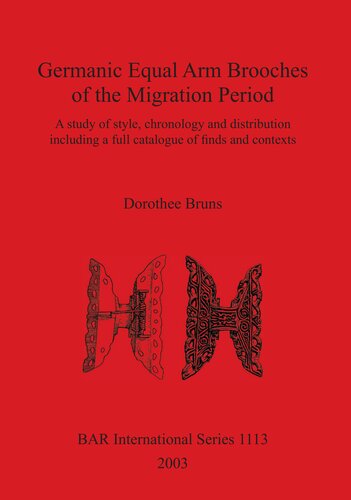

Most ebook files are in PDF format, so you can easily read them using various software such as Foxit Reader or directly on the Google Chrome browser.
Some ebook files are released by publishers in other formats such as .awz, .mobi, .epub, .fb2, etc. You may need to install specific software to read these formats on mobile/PC, such as Calibre.
Please read the tutorial at this link: https://ebookbell.com/faq
We offer FREE conversion to the popular formats you request; however, this may take some time. Therefore, right after payment, please email us, and we will try to provide the service as quickly as possible.
For some exceptional file formats or broken links (if any), please refrain from opening any disputes. Instead, email us first, and we will try to assist within a maximum of 6 hours.
EbookBell Team

4.7
36 reviewsThis work is a study of the much neglected brooch type - the "equal arm brooch", a highly distinctive form of personal ornament – and the particular execution of an ornamental style that has only so far been found on examples from north-western Germany. The emergence of these brooches spans only the 5th century AD, and while in the beginning they were limited to the region between the rivers Elbe and Weser in north western Germany, later they are also found spread throughout many areas of England. The equal arm brooches, as well as other items of Germanic origin, were probably introduced to England by a splinter group of the migrating Angles and Saxons (probably migrants from the region between the mouths of the Elbe and Weser). Few researchers have dealt with the equal arm brooches in detail and the author's aim in this study is to explore why equal arm brooches and their unique style emerged, developed so quickly, and then came to an abrupt decline. The volume succeeds in presenting this brooch type in a focused and comprehensive way, illustrating the differences and similarities between the various types and discussing the motifs and decoration as well as exploring their origin and possible social implication. Future research and finds (from both England and Germany) will be able to use this present study as a setting to assist with increasing knowledge of regional craftsmanship and the ornament's distribution on the Continent and in England.